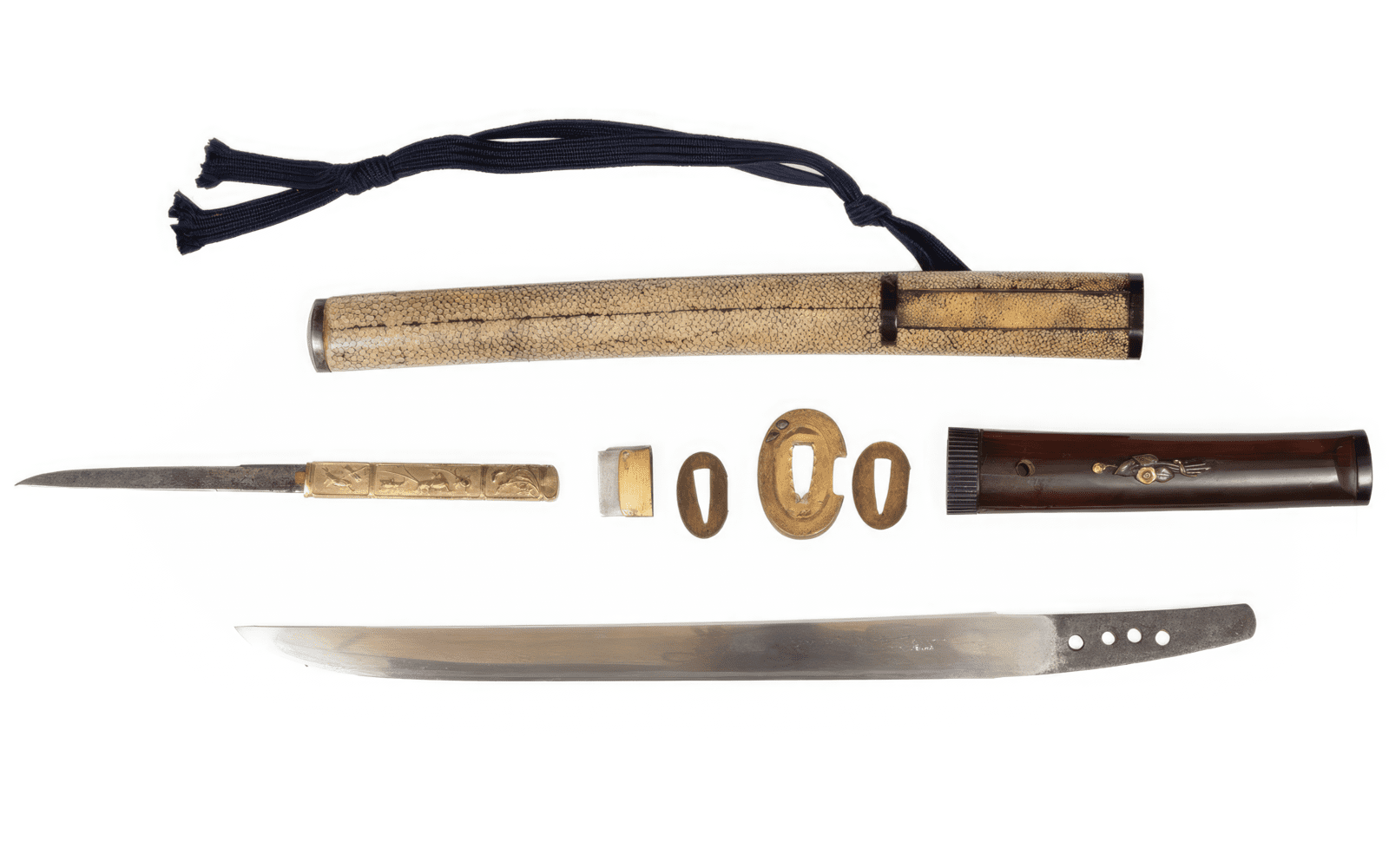Exploring Japanese Dagger Variations by Fittings and Blades
NO AI USED This Article has been written and edited by our team with no help of the AI

The Japanese dagger is known as the tanto. Some have strongly curved blades that are ideal for cutting, while others have straight blades and are perfect for stabbing.
In this article we introduce the various blade types and dagger fittings and explain their benefits.
Japanese Tanto Types: Blade Varieties

The most popular Japanese dagger is the tanto, which was famously carried by the samurai, both in battle and everyday life. These daggers vary considerably in terms of both the shape and curvature of their blades.
Blade Shape Types

The tanto has a variety of blade shapes (zukuri), each serving a particular purpose. The different shapes are:
- Hira – flat sided with no ridge
- Shinogi – a ridge under the spine with a bevel mark near the tip
- Osoraku – similar to the shinogi but the bevel mark is at the center
- Shobu – similar to the shinogi but with a smooth tip
- Unokubi – a spine that becomes thinner toward the tip
- Kanmuriotoshi – similar to the unokubi with the ridge ending at the tip
- Kissaki–Moroha – double-edged tip with the back edge curved downward
- Moroha – double-edged tip with a gradual taper
- Yoroltoshi – thick and sturdy
- Katakiriha – asymmetric with two types of blade shape on each side
Some of the most common are the hira, shinogi, unokubi, yoroltoshi, and osoraku zukuri. These are still used in Japanese martial arts such as tantojutsu.
Blade Curve Types

It is common for the blade of the tanto to be curved, but some are straight. In Japanese, the curve is called sori or zori. Here are the dagger types:
- Koshi-sori – a downwards curving blade
- Mu-sori – a straight blade
- Uchi-sori /Takenoko-sori – a spine that bends inward toward the tip
Japanese Dagger Types by Fittings
The fittings and mountings of a dagger are called koshirae.
The tanto served a variety of functions, from combat to daily use, and the fittings and mountings varied accordingly.
1. Aikuchi

The aikuchi was one of the most common fittings for a tanto, especially during the Edo Period (17th-19th century CE) when the wakizashi was carried alongside the katana.
The aikuchi dagger type does not feature a protective handguard. In some cases, the handle is of the same material as the scabbard, but often it is different and wrapped with rayskin. These were used for self-defense and offered a more stealthy approach.
“You would keep this inside your kimono and wrapped with cloth around the body and drawn by removing the sleeves”, says Seki Sensei, a Japanese martial arts Iaido master with over 40 years of experience.
2. Hamidashi / Maezashi

The hamidashi or maezashi tanto was designed for combat and would be carried in front of the body for easy access in self-defense. These tantos feature a very small tsuba (handguard) with a traditionally wrapped tsuka-maki handle.
3. Kaiken

Kaiken daggers have much smaller fittings. Most are wooden and made from the same variety of wood as their scabbard. This style of mounting is called shirasaya. Kaiken daggers were most often carried by women for self-defense.




